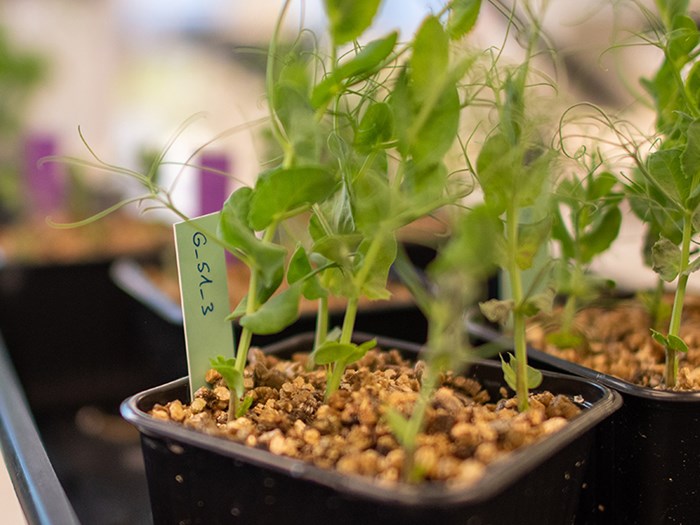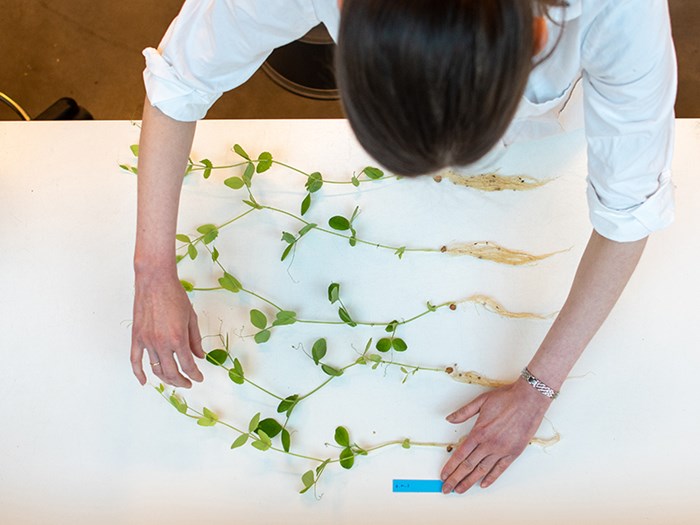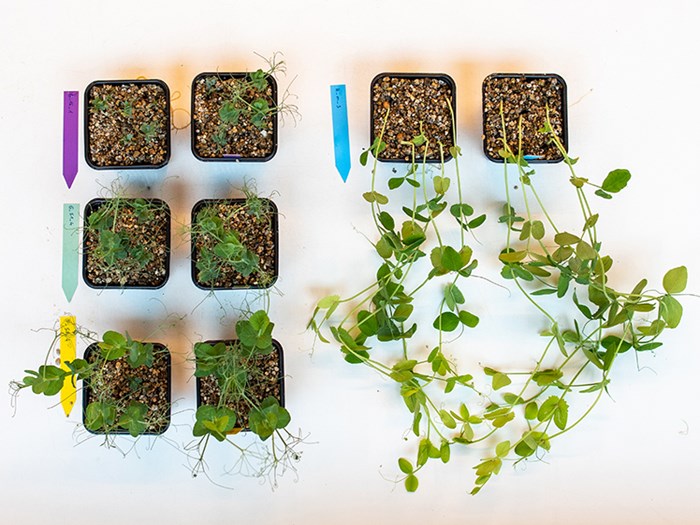Root rot in peas can be combated with resistant pea varieties

Peas often suffer from root rot caused by the water mold Aphanomyces euteiches. Can we combine the tasty but susceptible pea variety Linnea with an old German landrace to get partially resistant new varieties? In her doctoral thesis, Carol Kälin has investigated the result of this crossing and the genetics behind the disease resistance. In addition, she has investigated how European Aphanomyces euteiches populations differ genetically.
Aphanomyces euteiches is a water mold that causes root rot in pea. Root rot caused by this water mold, or oomycete, is the most devastating disease in green pea production and is a big problem in all regions with a temperate climate where peas are grown.
– Infected plants display typical root rot symptoms, such as brown and water-soaked lesions and a general reduction of the root volume. There are not many mitigation methods against the pathogen, and many commercial fungicides have no effect on suppressing the oomycete. In addition, Aphanomyces euteiches produces thick-walled survival structures called oospores that can remain in the soil for long periods, says Carol Kälin.
Old pea varieties can carry resistance
Crop rotation and avoidance of fields with high occurrence of Aphanomyces euteiches in the soil are the most efficient available measures against the disease. The best way, both economically and environmentally, would be to use resistant pea cultivars. Currently, there are no commercial pea cultivars available that carry full resistance to Aphanomyces euteiches, but several genetic individuals carry partial resistance and are used in breeding programs.
– An example of a pea variety that is partially resistant to Aphanomyces euteiches is the old German landrace called PI180693. Unfortunately, it also has undesirable breeding traits such as a dark seed coat and a starchy flavor. The line is currently used in Swedish pea breeding programs and crossed with the commercial pea cultivar Linnea. Linnea is not resistant, but the combination may work well.
What makes the disease aggressive?
In her PhD thesis, Carol has studied the genes responsible for an increased disease resistance in pea, as well as the genetics that make the pathogen more or less aggressive on the plant. She has been working in growth chambers, greenhouses, and with data from field trials.
– We confirmed that crosses between PI180693 and Linnea displayed higher levels of resistance. When I infected PI180693 and Linnea with Aphanomyces euteiches strains, I found the immune reaction between the two pea genotypes to be very different and both host- and time-dependent. We identified a set of 39 candidate disease resistance genes that can be used for the development of genetic markers in future breeding programs, says Carol.
Three genetically different groups
In another experiment, Carol investigated a collection of European Aphanomyces euteiches isolates from six different countries, spanning from north to south. The aim was to acquire knowledge about current pathogen populations that is important to support breeding programs.
– We found three genetically differentiated groups: a central European, a northeastern, and a genetically very distinct group in the south. The last was so different that we think it could be considered a separate Aphanomyces species. We also saw evidence for genetic movement of Aphanomyces euteiches between countries.
– My results contribute to future resistance breeding programs with a better understanding of the genetics underlying Aphanomyces euteiches resistance in pea, concludes Carol.
Carol Kälin will defend her thesis on the 5th of April at 9 am in Lennart Kennes Sal at the Biocentre in Uppsala.


